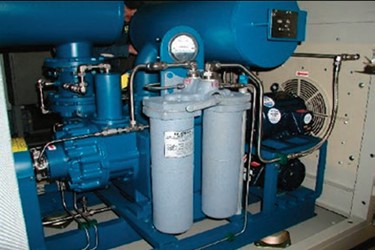Aerzen Flare Gas Case Study

Flaring gas is the process of burning off unwanted gas from hydrocarbon processing plants, refineries, and gas wells. It is recognized as a major environmental problem by the EPA and the IPCC. Approximately 150 billion m3 of waste gas is flared globally, which contributes to contaminating the environment by 400 Mt CO2 per year. Flare gas is identified as any gases that are burned off into the atmosphere. By 2018, in the USA, the EPA has mandated that all 142 refineries nationwide will need to comply with reducing toxic air pollutants to 5,200 tons per year and 50,000 tons per year of volatile organic compounds. This will result in a reduction in greenhouse gases equivalent to more than 660,000 tons per year of carbon dioxide.
Flare Gas Recovery (FGR) allows this wasted gas to be reclaimed. It provides a direct reduction in emissions and addresses the growing environmental, commercial, and public relations concerns with flaring and its emissions. Regardless of environmental benefits, there is a significant commercial one. The gas released to the flare is sufficiently rich and in such a quantity that a flare gas recovery system pays for itself, in many cases within one year.
Get unlimited access to:
Enter your credentials below to log in. Not yet a member of Chemical Online? Subscribe today.
